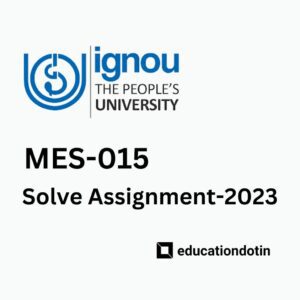Describe how resources are managed at central, state and community levels.
Resource management is a crucial aspect of the education system in India. It involves various stakeholders, including the central government, state governments, and local communities. Effective resource management is essential to ensure that all children have access to quality education, and that the education system is able to achieve its goals.
At the central level, the Ministry of Education plays a critical role in managing resources for education. The Ministry is responsible for formulating policies related to education, allocating funds, and providing technical assistance to states for the implementation of education programs. The Ministry also funds several national-level programs, such as the Sarva Shiksha Abhiyan, the Rashtriya Madhyamik Shiksha Abhiyan, and the Mid-Day Meal Scheme.
The Sarva Shiksha Abhiyan (SSA) is one of the flagship programs of the Ministry of Education. The SSA aims to provide universal access to quality elementary education to all children aged 6-14 years. The program has been instrumental in increasing enrollment rates and reducing dropout rates in primary schools. The SSA provides funding to states to improve infrastructure, provide teacher training, and develop teaching and learning materials. It also focuses on increasing community participation in education and on promoting the inclusion of children from disadvantaged backgrounds.
The Rashtriya Madhyamik Shiksha Abhiyan (RMSA) is another program funded by the central government. The RMSA aims to provide universal access to quality secondary education to all children aged 14-18 years. The program provides funding to states to improve infrastructure, provide teacher training, and develop teaching and learning materials. It also focuses on promoting the inclusion of children from disadvantaged backgrounds.
The Mid-Day Meal Scheme is a program that aims to provide nutritious meals to school children to improve their health and well-being and to encourage school attendance. The program has been successful in increasing enrollment rates and improving the nutritional status of children. The scheme is implemented by the state governments, with funding from the central government.
At the state level, the responsibility for managing education is with the State Department of Education. Each state has its own education policy, which outlines the state’s approach to education and its priorities. The state government is responsible for allocating funds to schools and colleges within its jurisdiction and for monitoring their performance. The state government also sets up institutions to provide training and support to teachers and other educational professionals.
In addition, the state government also funds various programs and initiatives to improve the quality of education. For example, many states have implemented programs to improve the quality of teaching, such as the District Institutes of Education and Training (DIETs) and the State Councils of Educational Research and Training (SCERTs). These institutions provide training and support to teachers and other educational professionals and help to improve the quality of teaching and learning.
At the community level, there are various bodies that manage education. These include local governing bodies such as the Panchayati Raj institutions, School Management Committees, and Parent-Teacher Associations. These bodies are responsible for monitoring the functioning of schools in their area, and for ensuring that the needs of the community are being met. They also play a role in mobilizing resources and providing support to schools, such as by contributing funds for infrastructure development, providing textbooks, and organizing community events.
One of the key challenges in resource management is the uneven distribution of resources across the country. Some states have better infrastructure, more qualified teachers, and higher budgets than others. This leads to disparities in the quality of education across different regions. To address this challenge, the central government has implemented several programs to provide additional support to disadvantaged states.
Effective resource management in education requires collaboration and coordination between the central, state, and community levels. The central government provides funding and policy direction, state governments allocate funds and monitor performance, and communities provide support and resources. By working together, these different levels can help ensure that resources are effectively managed and that every child has access to quality education.
In conclusion, education is critical to the overall development of a nation, and effective resource management is essential for providing quality education to all. The central, state, and community levels have distinct roles to play in managing education resources, and by working together, they can ensure that resources are utilized effectively to achieve the goal of providing quality education to all.
